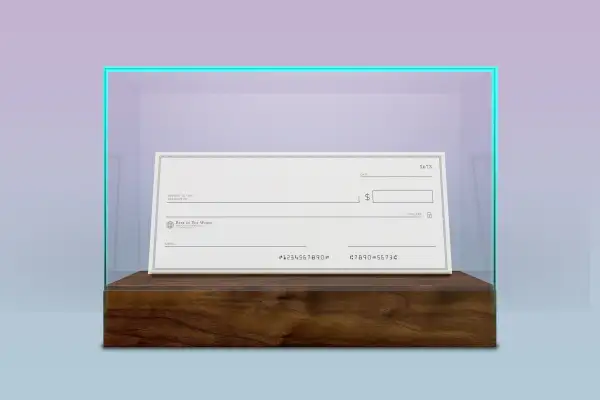Is Writing a Check Still Safe?

Writing checks may seem like an outdated way to pay for things, but plenty of people still use them.
More than 14.5 billion checks, totaling $25.8 trillion, were written in 2018, according to the Federal Reserve’s latest payments study. And while that number has decreased by about 7% every year since 2015, debit and credit cards payments aren’t as ubiquitous as many of us think.
In an era of identity theft and bank fraud, American’s long-standing relationship with their checkbooks begs the question: How safe is this 20th-century payment method?
After all, when you pay by check, you’re handing a slip of paper with your bank account number, and other personal details like your name and address, to another person (often a complete stranger).
Indeed, experts say, paying by debit or credit card tends to be the safer bet. Checks can be forged, and identity thieves could lift your personal and banking details straight from a paper check.
Even payment apps like Venmo and Zelle have a leg up over paper checks these days. Derik Farrar, head of personal deposits at Truist Bank, says that in 2020, 83% more Truist customers used Zelle—which the bank taps for peer to peer transfers—than they did in 2019. (As COVID-19 spread through the country, he says, people avoided in-person banking by swapping checks for virtual payments).
Here’s what you need to know about writing a check in 2021 — and how to minimize your risk.
How safe are paper checks?
Banks use security measures like watermarks and gradient backgrounds to prevent checks from being reproduced by fraudsters, and to help financial institutions and businesses validate them easily. In 2018, measures like these prevented 90% of attempted fraud, according to the American Bankers Association. Still, check fraud—which includes forgery, theft and counterfeiting—accounted for $1.3 billion that same year.
“A paper check may be handled and seen several times before ultimately being deposited or cashed,” says Tara Alderete, director of enterprise learning at Money Management International, a nonprofit financial counseling and education organization.
“And because paper checks include visible personal and financial information—your name, and bank routing and account numbers at minimum—they could put you at increased risk for fraud.”
The risk goes up if you don’t specify a recipient on the check — if you write a check to “cash,” anyone who gets a hold of it could cash it. If you need cash, it’s safer to use your debit card at an ATM or visit your bank and write a check out to yourself while you’re there, Alderete says.
People of all ages still write paper checks, but older Americans are more likely to do so. Since elderly people are more likely to be the targets of financial fraud than the general population, check-writing can compound their risk.
How to protect your details — and your money
There are several steps you can take to safeguard your information and reduce your risk of fraud.
For one, fill out the “payee” line and full, current date on every check you write. And always use ink.
It's wise to limit the information pre-printed on your check to just your name and address, Farrar says. Avoid including your birth date, telephone or driver’s license number. If a merchant requires these details, you can always write them in.
Keep your checks in a safe place — not in your purse or briefcase, which can be lost or stolen.
Monitor your bank account activity regularly, too. Balancing your checkbook often isn't just a good financial habit. By keeping an eye on your finances, you also reduce your risk of fraud, Alderete says.
Don't chuck your checkbook (yet)
Even if you prefer paying electronically, you probably shouldn’t write off checks altogether.
Some small businesses still don’t accept debit or credit cards, and if they do, they might charge a fee for it. (Businesses are charged a processing fee for electronic transactions, so not accepting them helps keep costs down, Alderete says).
Sometimes, paying by check is just easier — many people like to have their checkbooks handy to gift people money, or to pay for services like dog walking or yard work.
Checks also offer a paper trail, so they’re usually the go-to payment for big purchases, like a down payment on a home or an IRS tax bill. And that’s a good thing: If a problem comes up, you’ll have a copy of the deposited check, and a track record of when the payment was made, received and applied.
No payment method is 100% fraud-proof.
Still, Farrar says, "With proper handling, checks are an extremely safe method of banking, as they have been for hundreds of years."
More from Money:
What is Identity Theft, Exactly?
If You're Not Shredding All Your Mail, You're Making a Big Mistake